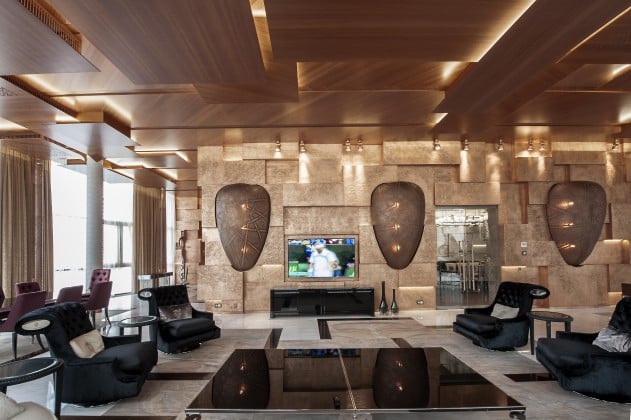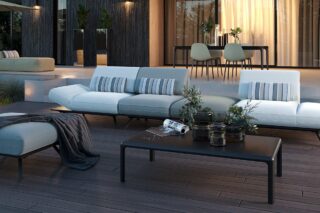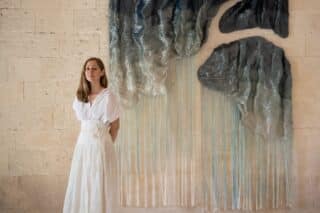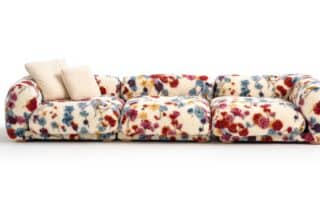Although Russian product design scene is somewhat hidden from the eyes of the global design community, Russia has indeed emerged as a home to many young and ambitious designers striving to bring their message and ideas across. ArchiExpo caught up with some of them in Moscow and St. Petersburg to chat about their latest projects and the trends they follow or shun.
Talk to any designer or design school professor in Russia, and you will be reminded that the word “design” was banned in Soviet Russia until the very end of 1980s. Before that, it was called artistic engineering or technical aesthetics.
For most of Russia’s contemporary designers and architects, all this is nothing but history. While some of them admit that the country’s craft and manufacturing scene, the outdated customs laws, procedures and other bureaucratic hurdles make it difficult for designers to create things and showcase their creations in the rest of the world easily, the product design scene is growing stronger day by day, offering a dazzling variety of concepts and approaches.
Katerina Kopytina
Moscow-based designer Katerina Kopytina has just published her new project, The One—a tiny stylish 1500 mAh power bank for the iPhone she designed for Singapore-based ONE Mobile Technologies. Released in three colors, black, tiffany blue and coral, The One is a stylish, soft-coated power bank designed for big-city people who are always on the move.
“It’s very compact, so it can easily fit into a purse, pocket or a backpack, but it is also multipurpose. It has two wires for charging and transferring files from mobile to other devices at the same time,” Katerina says. The One also has tiny magnets inside its body to shove in the connectors making the power bank ‘‘almost alive,” she adds.
Katerina’s 2015 project, The Kuiper Belt—a series of ceramic pots fixed on shaped metallic frames resembling objects in the Solar System—remains her favorite, as it carries almost sacred meaning. After she dedicated the project to as-yet-undiscovered life forms and named it The Kuiper Belt, researchers found evidence of a giant planet in the outer solar system. The object, which they nicknamed Planet Nine, is located in the field of icy objects and debris beyond Neptune known as the Kuiper Belt. “This project became quite popular so I am starting mass production now. Also, the whole design community now knows about Kuiper Belt,” Katerina says.
Ekaterina Vagurina
Kuiper Belt was designed as a part of Naturalist, a 2015 collective project of several Russian product designers initiated by IZBA Team. Another young designer, Ekaterina Vagurina, who is currently based in St. Petersburg and is originally from Murmansk, the extreme Northwest of Russia, was also a part of this project. For ‘Naturalist’, she came up with Fitodom, an organizer for houseplants that affixes to a wall.
St. Petersburg Stieglitz State Academy of Art and Design graduate Ekaterina Vagurina was always intrigued by ceramics and unusual combination of various materials. A wooden vertical balk with white ceramic pots of different shapes and sizes moving up and down along the balk axis is her attempt to rethink the way indoor plants can be arranged.
Another project of hers, The Krater, is a set of dishes for fruits and cookies. Three differently shaped dishes made of painted porcelain, wood and engineered stone form a single dish that saves space and serves as a fancy showpiece. “The bottom plate is currently made of lightweight concrete, but I am now trying to work it out with ceramics—this material is much closer to the functionality of dishes, although the geometry of the project is too complex and unusual for such material as ceramics,” Katerina says.
Plan-S23 studio
Maxim Scherbakov, another designer from St. Petersburg who is running Plan-S23 studio along with designer Alexey Galkin, participated in Naturalist with Plantscape project with a tricky experiment around the concept of survival of the plants in urban environments dominated by concrete and bitumen.
“Plantscape is a polygon with multiple scenarios where the plants may have to find their own way to the light,” Maxim explains. The designers recreated several urban scenarios—pipelines, gaps between concrete slabs, paving tiles, ventilation and sewage hatches. The combination of limestone and brass in Plantscape was mainly inspired by the stylistics of the Soviet architecture of late ’70s, when limestone was often used for the facades and brass for smaller details.
“Russian product design is a bit plain at the moment because of manufacturing constraints, but the industry is developing fast and there are really interesting projects out here,” Maxim says adding that Russian designers are currently turning back to country’s rich art heritage of last century, mainly Russian avant-garde, for inspiration and ideas.
Maxim’s recent projects like stationary kit K-1 (or Konstruktor-1) inspired by Soviet construction toys and set of P-1 chairs made of metal rods and plywood are inspired by the aesthetic innovation of avant-garde and the philosophy of Russian Constructivism. “It is a source of inspiration rather than just borrowing the techniques, it happens intuitively,” Maxim says.
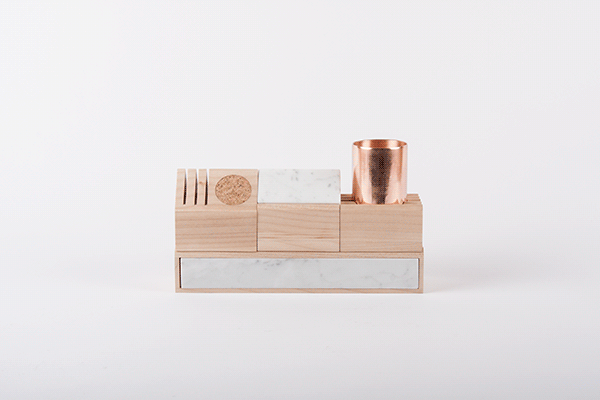
Sergey Estrin Architectural Studio
Minimalism, practicality and tendency to use natural materials like wood or ceramics are also common for product designers in Russia, and a central theme of one of Sergey Estrin Architectural Studio (AMSE)’s latest interior designs. Back in Moscow, Sergey Estrin and his team experiment with forms, shapes and materials.
When creating his award-wining interior of the public spaces of Eurasia Tower in Moscow City, the multifunctional high-rise complex in the heart of Russian capital, Estrin, a graduate of Moscow Architectural Institute, experimented with forest themes. The entrance hall of the office building is decorated with stylized tropical trees with massive trunks and wide crowns, each with unique details. The reception desks resemble fallen logs and are manufactured by Russian design company Nayada. In the office areas of the building, the designer created ceiling decor that resemble tree tops, using wood and veneer along with soft lights, while in the retail spaces he chose dark and solid metallic columns and panels.
AMSE’s design of a country house in Zhukovka village for a VIP client is the studio’s latest experiment with large spaces. “Decorative techniques do not really work in such spaces, so we had to use architectural techniques by working around scale, proportions and the rhythm. The variety of materials and techniques used for the interiors of this villa is impressive: solid walnut combined with natural stone for the flooring, stained solid wood among other materials for the ceilings, textured plaster and leaf copper for the walls and, finally, leather, glass, perforated copper and brass for the doors and other details. The challenge, according to Estrin, was to make the interiors of the house suitable for the owners’ status and comfortable for living at the same time.



